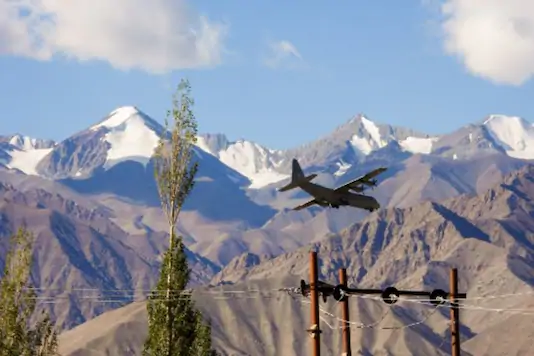
SOURCE : CNN-NEWS18
Will there be a full-blown war between India and China anytime soon? The assessment at the highest levels of India’s security establishment is clear. The threshold of war hasn’t been reached yet.
“It is difficult to predict the trajectory of the face-off, but we haven’t reached the threshold of war. Things do build up to a full-blown conflict, but so far there have been only pinpricks. The Chinese deployment right now is non-tactical,” a top government source said.
So how will things play out in the next few weeks and months? The reading within the government is that there will be minor escalations like the one on August 29-30 when the Chinese army tried to occupy Indian heights at the South bank of Pangong Lake. There is also complete clarity that the face-off and what direction it takes is not being controlled by local commanders or by the Western Theater Command, but by the top leadership in China.
“You just cannot trust the Chinese. On the morning of the 29th, the Chinese Commander in Chushul had spoken to his Indian counterpart about following established protocol and not doing any movement at night. And yet, the same night, he moved his men towards our posts.”
In eastern Ladakh, both the North and South banks, Rezang La and Rechin La remain on knife’s edge.
INDIA IN DOMINATING POSITION
India is now in a dominating position at Finger 4 in the North bank. A “significant number” of Indian troops are sitting at heights overlooking Chinese posts, rattling the People’s Liberation Army (PLA).
At the ridge, Indian and Chinese troops are eyeball-to-eyeball, barely a few 100 metres apart. At the shoreline, they are a couple of kilometres apart.
At South bank, India is dominating strategic heights, but Black Top is not one of them. Government sources clarified that Black Top has always been with the Chinese, who continue their daily intimidating tactics in the South bank.
NEW RED LINE
“The Chinese move troops and tanks, and try to close in on Indian positions. We ask them not to cross the line, after sometime they go back. They know if they move further, they will have a military cost to pay,” said the source.
To avoid a Galwan Valley type of clash, the Indian Army has made it clear to the Chinese that their perimeter which is defined by barbed wires cannot be breached. If the Chinese troops do cross it, then they will have to be ready for a “professional response” from the Indian Army, which means the possibility of shots being fired cannot be ruled out.
But how did such a large build-up of Chinese troops take place without the Indian Army noticing it? Government sources deny intelligence failure.
“We knew the PLA had come in with large numbers, but we assumed this was their regular deployment for the campaigning season. What we didn’t realise is that they would come in suddenly and occupy areas,” the source said.
50,000 PLA TROOPS IN LADAKH
The Chinese have 50,000 troops, 150 fighter planes, surface-to-air ballistic missiles and rocket forces deployed in eastern Ladakh. The Indian Army is looking at nothing short of a complete disengagement, where all additional deployment “goes back to the barracks”.
“We want talks to succeed. After Galwan (clashes) and before the August 29 aggression, we were confident that talks would succeed. The sense we got from the defense ministers’ meet was that the Chinese don’t want a war. We have asked for another round of Corps Cdr-level talks. They have agreed. But we are fully prepared if things don’t work out.”
The build-up on the Indian side has been going on for the last three months. The army is almost completing its advanced winter-stocking. It’s going to be a long, hard and tense winter in eastern Ladakh. But there is one question that has still not been answered. Why did the Chinese pick a fight with India in the middle of a pandemic?
“I wish we knew. We ask ourselves that question everyday.”






